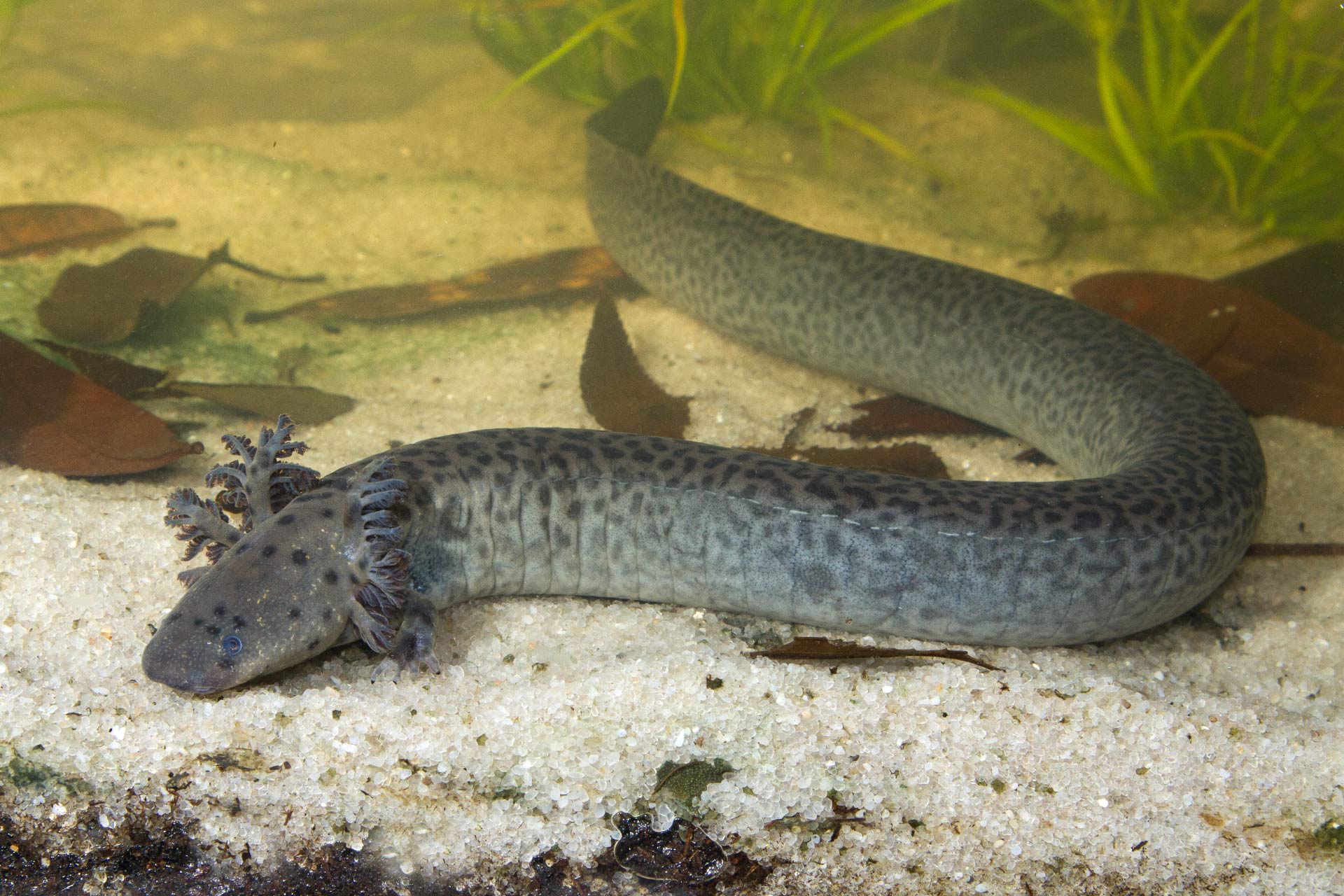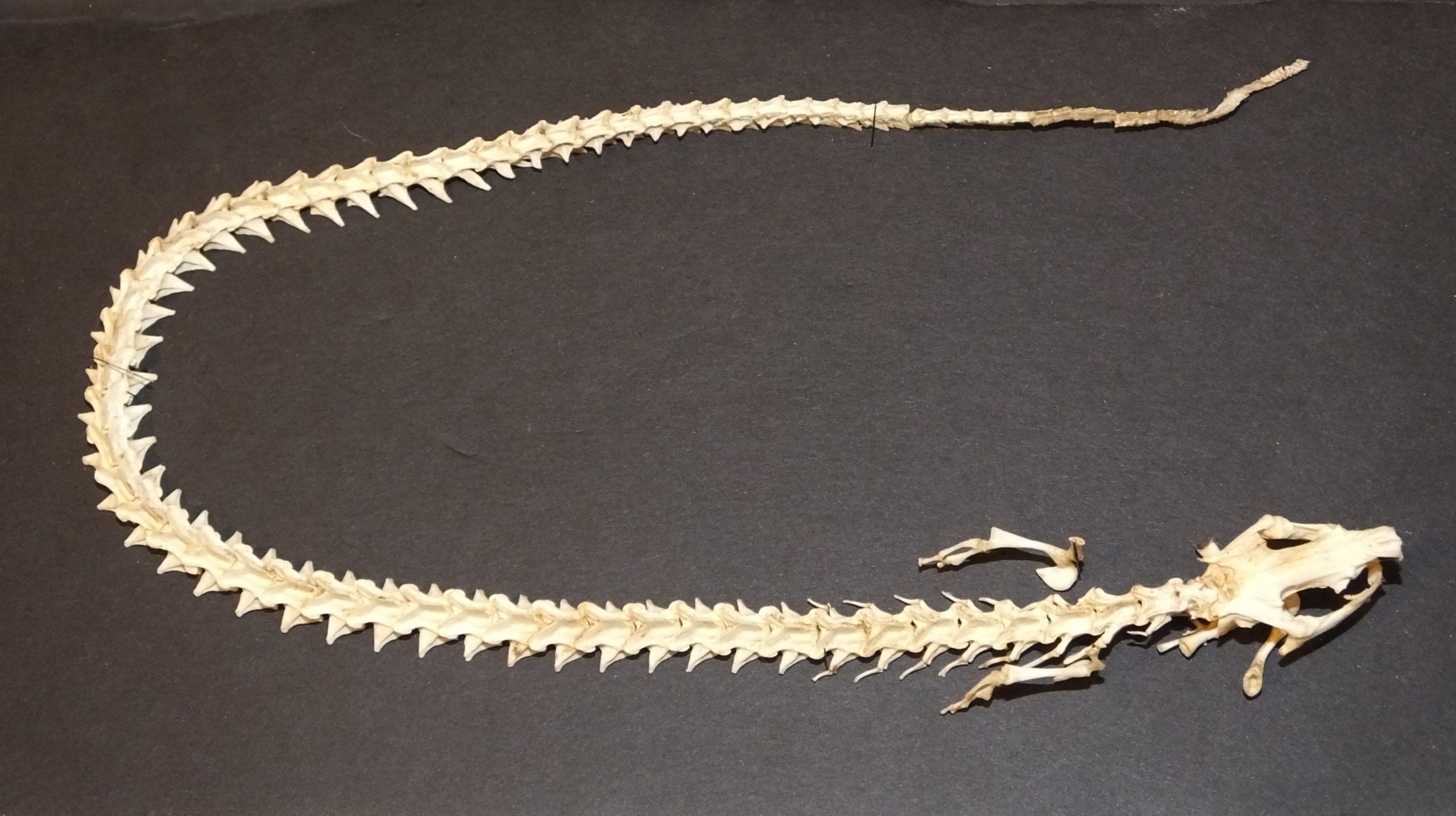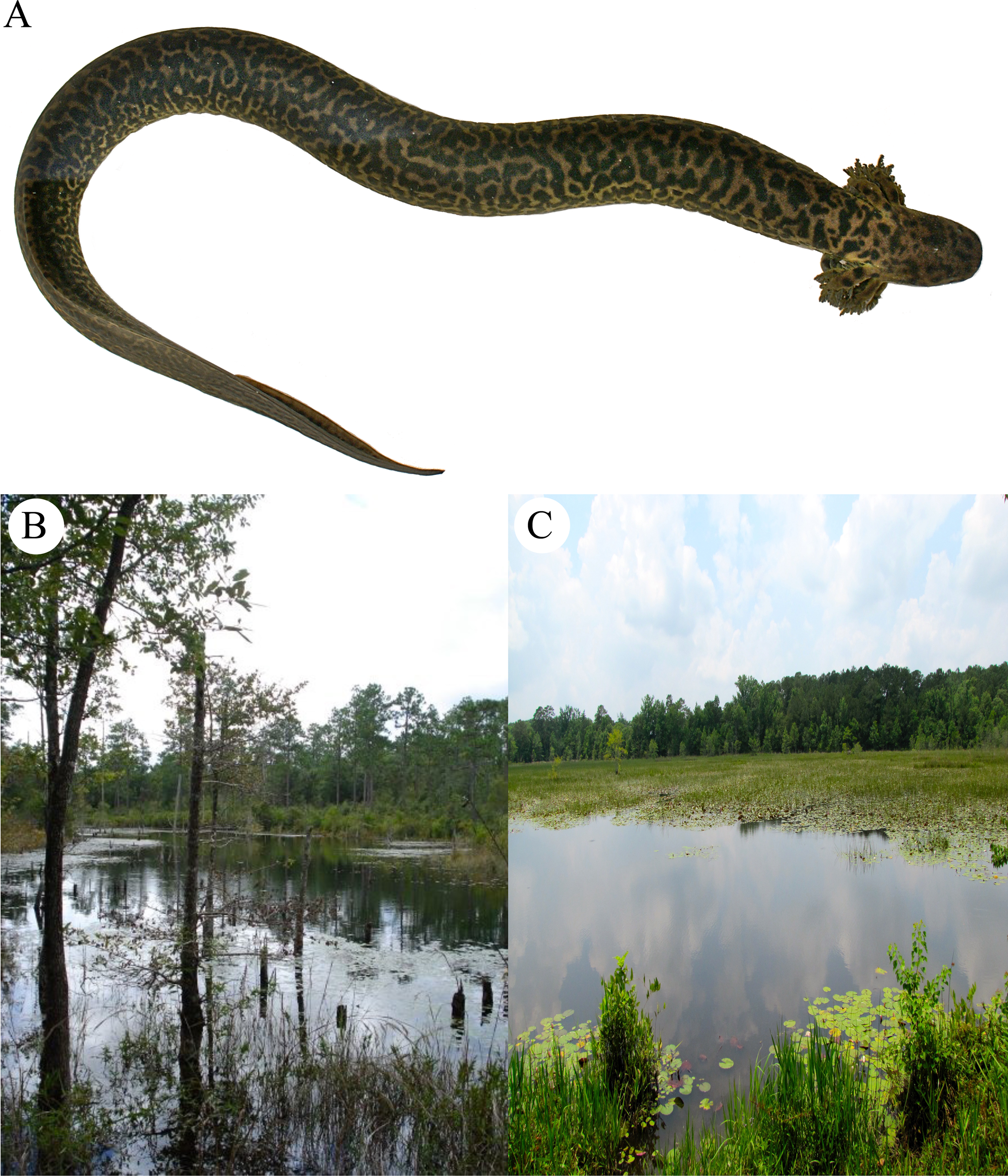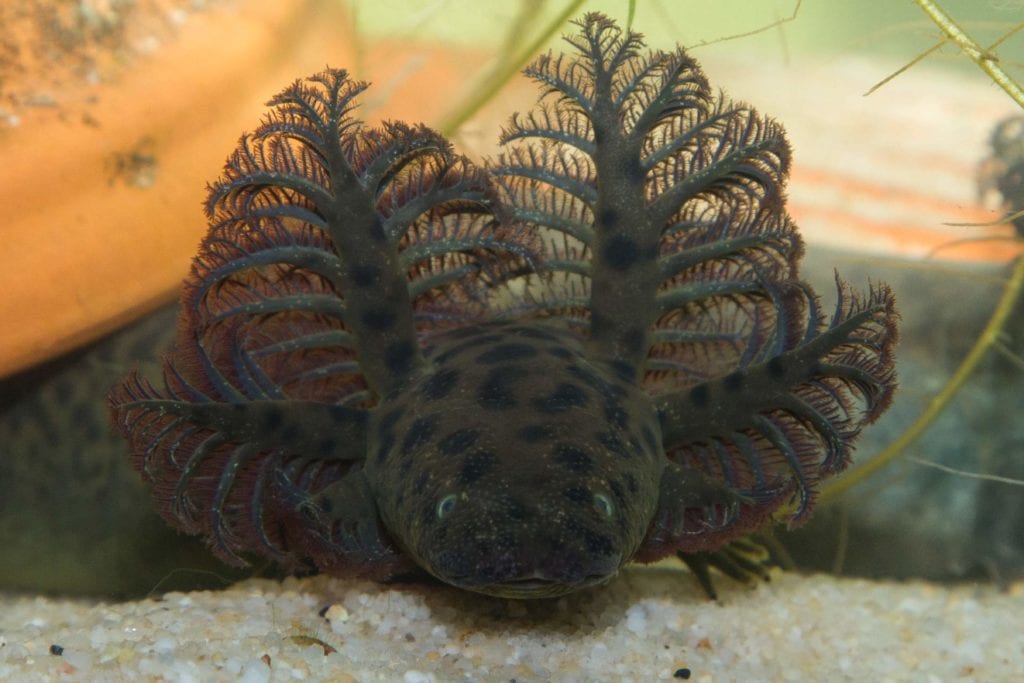Your mind may wander to images of ghastly sea creatures when you hear the word ‘siren’ – the kind that lures gullible seafarers to a watery grave. As it turns out, Sirenidae is a family of aquatic salamanders native to the south-eastern United States and northern Mexico. A species described in 2018 is known as the fourth largest salamander species in the world.
Your mind may wander to images of ghastly sea creatures when you hear the word ‘siren’ – the kind that lures gullible seafarers to a watery grave. As it turns out, Sirenidae is a family of aquatic salamanders native to the south-eastern United States and northern Mexico. A species described in 2018 is known as the fourth largest salamander species in the world.

A reticulated siren from northwestern Florida (Okaloosa County)Photo: Pierson Hill
A reticulated siren from northwestern Florida (Okaloosa County)Photo: Pierson Hill
Meet the reticulated siren, Siren reticulata. It is also known as the leopard eel – but is of course neither a leopard nor an eel. As part of Sirenidae, it is related to other salamanders and amphibians, but this family is known for more ‘primitive’ morphological features. It’s likely that they diverged from other salamanders much earlier in their evolutionary history.
They are fully aquatic and neotenic – retaining ‘juvenile’ larval features for their whole lives – such as axolotls. Reticulated sirens also sport an impressive frilly crown of gills reminiscent of axolotls. Despite being fully aquatic, they can reportedly crawl across land between bodies of water in favourable (wet) conditions. To survive drought, they bury themselves in mud and coat themselves in mucus. In this situation the gills are functionless, and they must get by respiring with their rudimentary lungs.
Meet the reticulated siren, Siren reticulata. It is also known as the leopard eel – but is of course neither a leopard nor an eel. As part of Sirenidae, it is related to other salamanders and amphibians, but this family is known for more ‘primitive’ morphological features. It’s likely that they diverged from other salamanders much earlier in their evolutionary history.
They are fully aquatic and neotenic – retaining ‘juvenile’ larval features for their whole lives – such as axolotls. Reticulated sirens also sport an impressive frilly crown of gills reminiscent of axolotls. Despite being fully aquatic, they can reportedly crawl across land between bodies of water in favourable (wet) conditions. To survive drought, they bury themselves in mud and coat themselves in mucus. In this situation the gills are functionless, and they must get by respiring with their rudimentary lungs.

Sirens were more diverse during the Cretaceous period with species populating North and South America as well as Africa. Now though, they are restricted to muddy pond and freshwater marshes habitats around the Florida peninsula, general south-eastern United States and northern Mexico.
Sirens possess forelimbs which are tiny, but fully developed, while lacking any hindlimbs, giving them an ‘eel-like’ form. S. reticulata can reach 2 feet or more in length, which is a feature that stood out when it was first officially described by Graham et al. in PLoS ONE. Genetic and morphological analysis officially distinguished it as its own species.
This made it the third extant species of siren today alongside Siren intermedia and Siren lacertina.
Sirens were more diverse during the Cretaceous period with species populating North and South America as well as Africa. Now though, they are restricted to muddy pond and freshwater marshes habitats around the Florida peninsula, general south-eastern United States and northern Mexico.
Sirens possess forelimbs which are tiny, but fully developed, while lacking any hindlimbs, giving them an ‘eel-like’ form. S. reticulata can reach 2 feet or more in length, which is a feature that stood out when it was first officially described by Graham et al. in PLoS ONE. Genetic and morphological analysis officially distinguished it as its own species.
This made it the third extant species of siren today alongside Siren intermedia and Siren lacertina.
Captive breeding efforts of sirens has revealed some details about their ways of life. They undergo external fertilisation, and interestingly, males display parental care, going so far as to build nests for offspring. These findings were for S. intermedia – it’s always possible that these behaviours may vary between species. Not as much is known about S. reticulata.
This means it is also currently not known how they are doing via the lens of conservation. Excessive drought due to climate change may pose a challenge for a species so reliant on bodies of water and moisture, but so far they seem well equipped with adaptations to withstand these periods.
Captive breeding efforts of sirens has revealed some details about their ways of life. They undergo external fertilisation, and interestingly, males display parental care, going so far as to build nests for offspring. These findings were for S. intermedia – it’s always possible that these behaviours may vary between species. Not as much is known about S. reticulata.
This means it is also currently not known how they are doing via the lens of conservation. Excessive drought due to climate change may pose a challenge for a species so reliant on bodies of water and moisture, but so far they seem well equipped with adaptations to withstand these periods.
By HCA – Own work, CC BY-SA 4.0, https://commons.wikimedia.org/w/index.php?curid=49489259
By HCA – Own work, CC BY-SA 4.0, https://commons.wikimedia.org/w/index.php?curid=49489259

